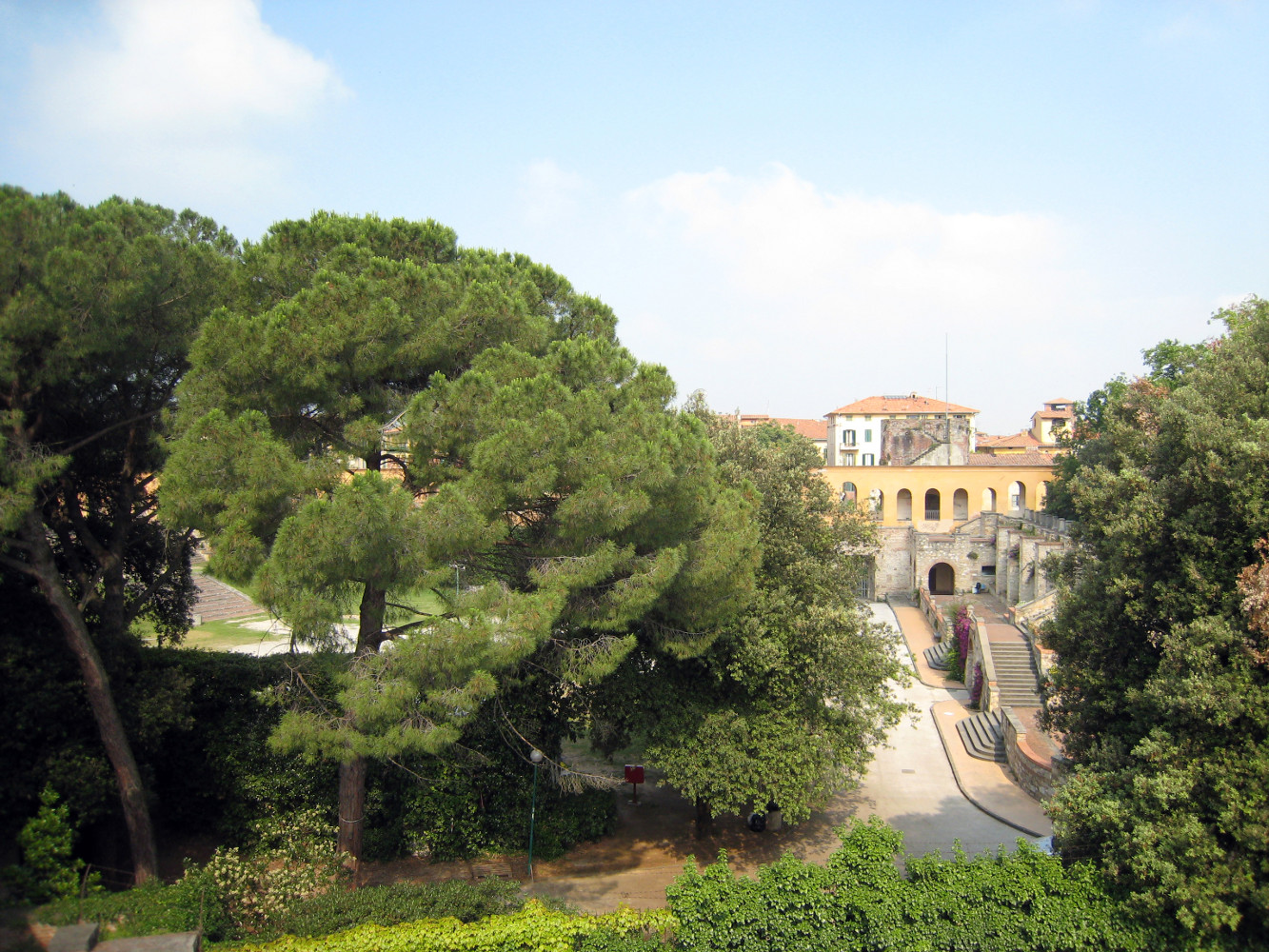Scotto Garden represents the last destination of the Pisa region which is undergoing constant transformation, as also shown in the results of archaeological excavations conducted here. The area may have already partially settled in the Roman era, where it was adjacent to the Via Aemilia Scauri. It was abandoned in the early Middle Ages, and was chosen in 1095 to found the church of S. Andrea in Chinzica. In the 13th century, it was recognized as a literal region associated with the production of ceramics, hence the name Baractularia in the Middle Ages, while during the 14th century a series of plants were installed to melt the bronze bells, an activity characterized by the masters of Bisan.
In the 15th century, after the conquest of Florence, Florence decided to build a fortified fortress (1440-75), designed with the participation of Brunelleschi and aimed at controlling the Bazan citizens. The two semi-circular towers and the stone wall with shoes to the west were rebuilt as part of the medieval city walls and included the complete destruction of the pre-existing area.
In 1495 partisan rebels partially destroyed the castle. Between 1509 and 1512, after Florentin's second conquest, Antonio da Sangallo used part of the former fortress and built a new fortress of a southern star still visible from Piazza Girazi and a stronghold on Arno.
The castle was dismantled in 1785, and instead of the fort was built a noble palace which soon became the property of Dominico Scoto, from which his name was derived, which used the back of the castle as a private garden. In 1936, when the palace became the headquarters of the Royal Police, the park was donated to citizens by the last heirs.
x
T
R
F
I
H
I
We have 16614 Parks Now ... The First and largest platform for green public parks
Giardino Scotto
Giardino Scotto
Lungarno Leonardo Fibonacci, 2, 56125 Pisa PI, Italy
saturday, Sunday, Tuesday, Wednesday, Thursday, Friday : 09:00 am To 08:00 pm . Monday : 09:00 am To 06:00 pm .
About Park
-
Preview
One of the most important parks in PisaImportant Information
-
saturday, Sunday, Tuesday, Wednesday, Thursday, Friday
09:00 am To 08:00 pm Monday
09:00 am To 06:00 pm -
Foundation Date
1/1/1936
-
saturday, Sunday, Tuesday, Wednesday, Thursday, Friday
-
Intertainment Elements
Sports
Sitting places
Entertainment
Trips
Festivals
-
Main Elements
- Cleanliness
- Green areas
- Open spaces
- Open paths for walking







